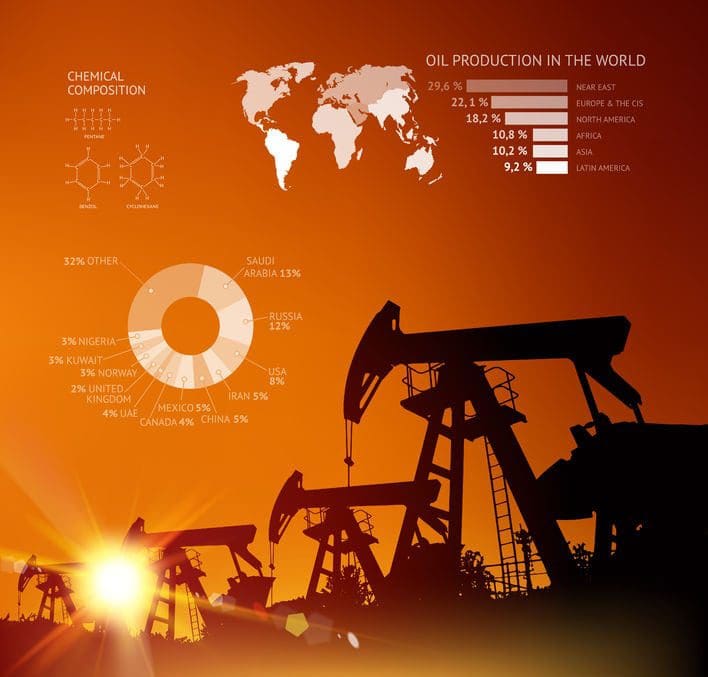Data Visualization Can Help Your Oil and Gas Company
The oil and gas industry goes through many changes over the decades. This is because the industry involves heavy amounts of data, research, and need for reporting, it may be quite challenging to compile this information and make it digestible and transferrable to stakeholders. It is difficult to simply access information in order to perform our goals. As a solution, data visualization can help bridge the gap in this problem.
We can notice that the business model of oil and gas companies presents its outstanding features. Unlike retail or small businesses, oil and gas industry relies on big capital investments. When we look at conventional ways to gather data, it may be difficult to retrieve the pertinent information that we need to help us address the industry’s needs.
Data visualization is a great way to help aggregate the important information needed, for data to be disseminated across several multimedia forms more efficiently, and to help improve business processes without affecting safety. Through the use of images, the oil and gas industry can easily benefit from infographics and other pictures that can help stakeholders understand large amounts of data in a comprehensive format.
They say that most people are visual learners and this why it is important to deploy visual data to help in your business. When you present meaningful information using engaging graphics, you are able to present the information in a more understandable manner.
How to Successfully Deploy Data Visualization for Your Oil and Gas Company
- Find access to your main database of information
The first step in creating great data visualization for your oil and gas company is to get access to your database. Your database of information should ideally be centralized, to help you save time getting all the information you need across several departments.
In an oil and gas company, you may have particular teams (i.e. engineering, maintenance, security, research, ventures, administration, etc.) that operate within the system. Having a centralized form of access throughout your company’s data helps you to get all the information you need. Otherwise, you may have to get information from each department separately.
- Create an outline of the information you need
The second step is creating an outline of the information that you need. From getting information across all your departments, what information is useful for you to include in your data visualization plan. Does it include statistics about your recent ventures? Does it contain how much percentage of returns have you been getting in the last 5-10 years? Do you want to include the data about your current resource retrieval system?
Whichever data you want to include, it may be helpful to place all this information using an outline. Numerical data is important so that your data visualization can be made using charts and graphs when it comes to quantitative variables.
You can hire a data analyst to help in this task, or if you already have a data analysis team employed, they will be able to do this efficiently on your given deadline.
- Present this information to a data visualization company
A great way to save time to create visual data for your oil and gas company is presenting information to a data visualization company. Companies who are experts in data visualization know how to best portray the data through graphics and compile the given information in a single image.
The best part about hiring data visualization companies is that they have the right tools to make the process quickly and efficiently. It is known that the oil and gas industry requires a lot of research, and as a consequence, there is a lot of data that needs to be sifted through, categorized, and organized.
Some of these may be difficult to comprehend especially if you want to convince investors, and data visualization companies can help you do this by presenting your information in an engaging way.
- State which data visualization types you need based on categories
After you present the information to be visualized, you need to decide which categories you want to include in your infographics.
For example, you want to place percentages of oil and gas retrieved per location. The data visualizers may be able to include a chart that shows each location as a bar that rises up and down depending on the percentages they yield over an annual period.
Additionally, you can also create data visualization by making cycle charts that show how you start an oil and gas research venture. You can make use of this chart to help explain your ventures to potential investors more efficiently.
- You can also create your own simple data visualization through the use of data visualization software
Additionally, there is also data visualization software that you can use to help you create graphics for the information you placed. Izenda, a business analytics platform, helps create data visualization for your company using quick and efficient analytic results based on the data you wish to present.
Data visualization software is one of the quickest and most accurate ways to help make comprehensive infographics for your business. It incorporates the use of machine learning and other automated processes to fill in your company’s needs.
Another benefit of data visualization software is its consistent use of systems to interpret data.
The problem of doing data visualization manually is the potential for human error. When you deploy software, there is a lesser risk to create errors, and the outputs are done in a consistent quality.
- Your infographic is ready to use in reports, blog posts, conventions, seminars, and other meaningful purposes
After getting the output of your desired data visualization source, you can now use these graphics for many purposes.
The most common uses of data visualization are by presenting them in reports. Most of these reports are presented to investors and venture capitalists. It is important to pitch ideas efficiently if you are constantly looking for partnerships in your business.
Presenting the information in a vague manner is detrimental to your stakeholder’s comprehension, thus making them uninterested with your business pitches.
Data visualization is a powerful tool that can help your oil and gas company grow. Not only will it help you easily access the information that you need, you will also gain better experiences in presenting pertinent information for people who might be interested in networking with your business.
Lee Nagel is the Vice President of Izenda. He is responsible for marketing Izenda’s products and services for many corporate and industrial businesses. He is the expert in creating opportunities for Izenda to reach the global market, coordinate with companies, present Izenda’s goals in conferences, as well as creating demand for business analytics. Mr. Nagel has an entrepreneurial and determined spirit, and he is known for his vast experience in helping Fortune 500 companies to succeed.






